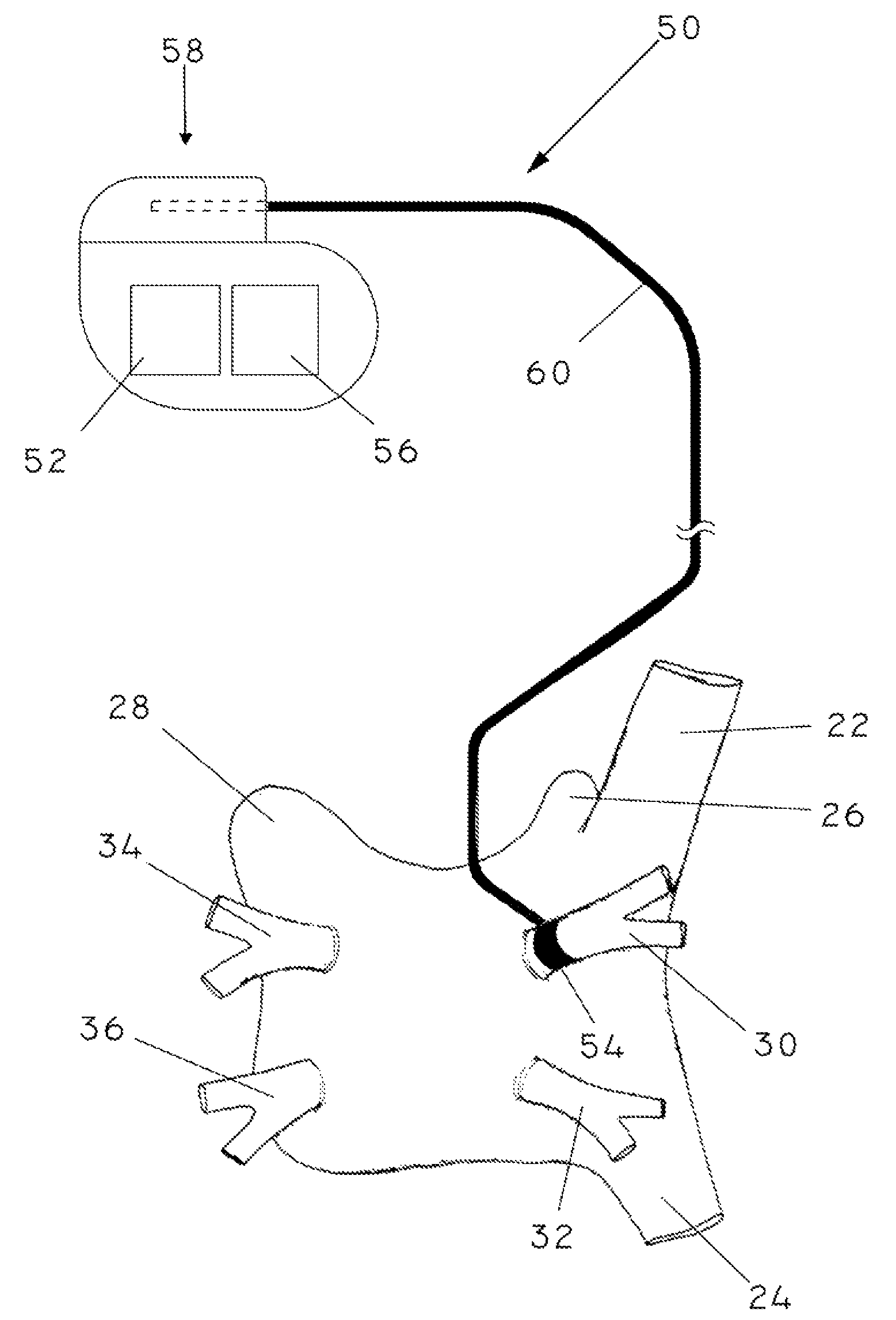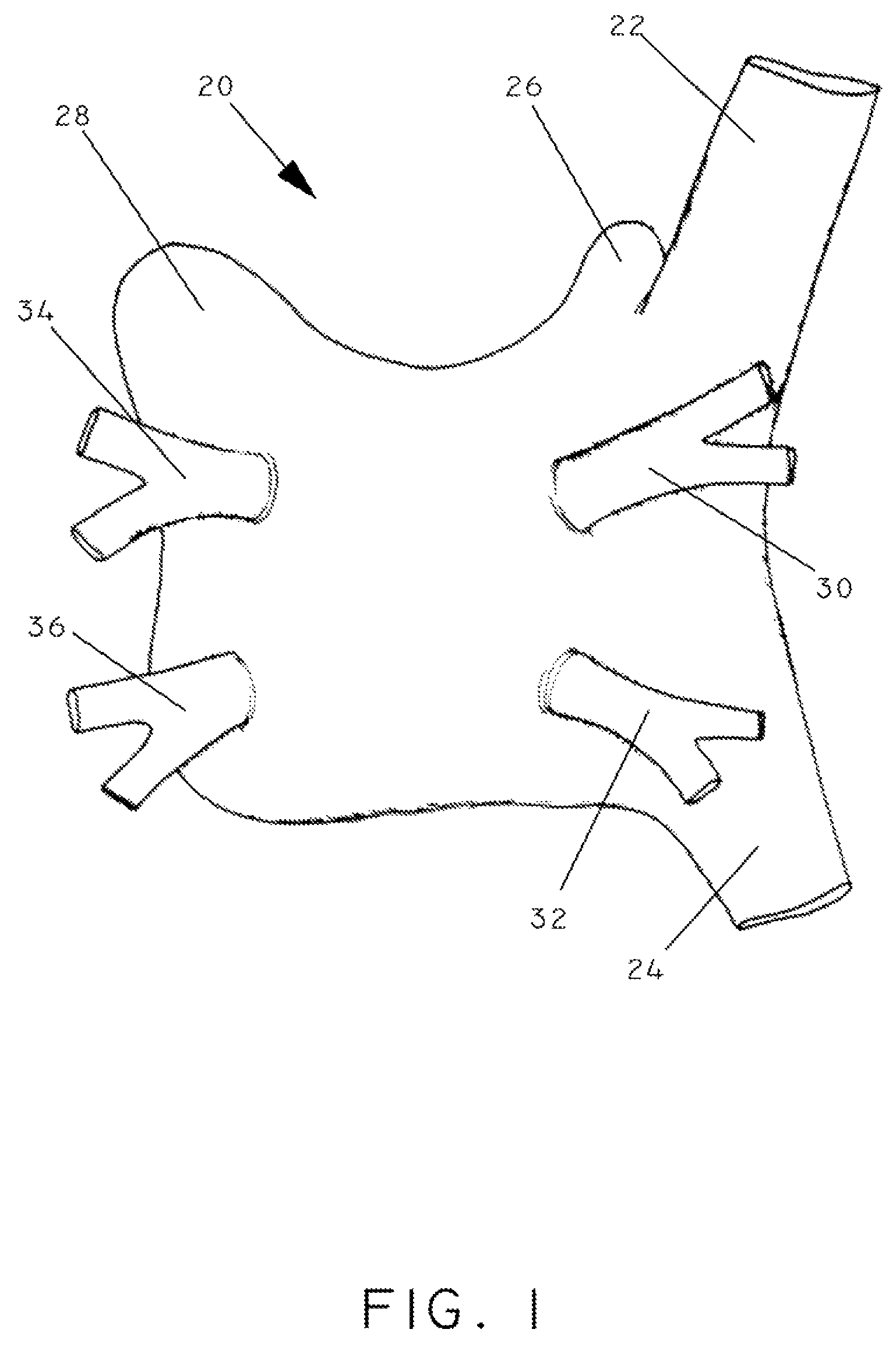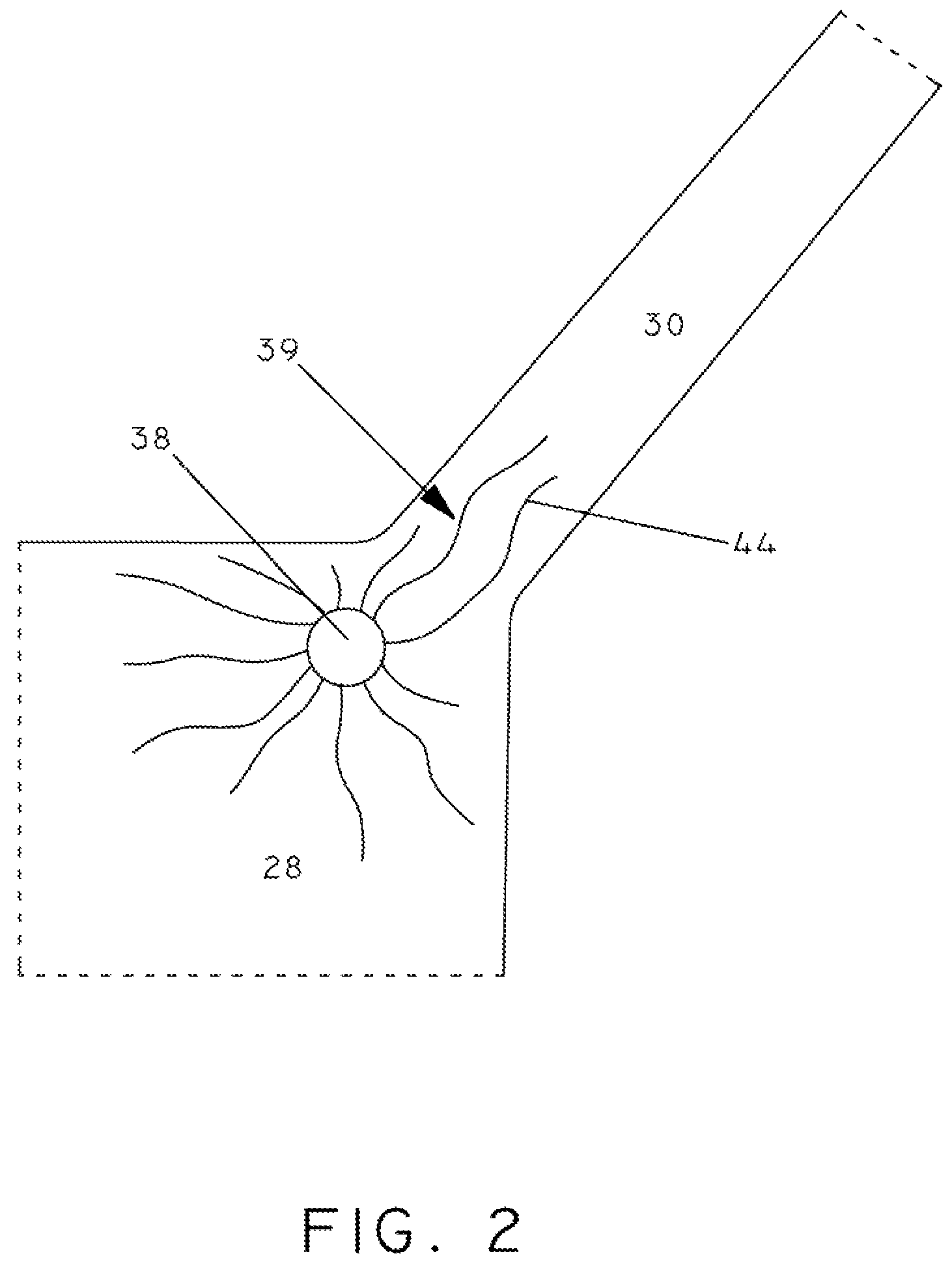High frequency stimulation for treatment of atrial fibrillation
a high-frequency stimulation and atrial fibrillation technology, applied in the field of atrial fibrillation control devices and methods, can solve the problems of limiting physical activity, inefficient heart operation, and inability to fill the ventricles, so as to prevent atrial fibrillation, treat and/or prevent atrial fibrillation
- Summary
- Abstract
- Description
- Claims
- Application Information
AI Technical Summary
Benefits of technology
Problems solved by technology
Method used
Image
Examples
Embodiment Construction
[0023]In the human heart, the sinoatrial node (SA node) is a small region in the right atrial wall near the opening of the superior vena cava. The SA node is made of cells with autorhythmic characteristics, such that they are capable of initiating an action potential. Although other cardiac cells have autorhythmic characteristics, the SA node typically has the fastest rate of autorhythmicity and therefore generally controls the pacing rate of the heart. In a normal heart, an action potential originating in the SA node spreads through both atria through mechanisms including from cell to cell by gap junctions. The presence of the action potential in the myocardial cells of the atria causes the atria to contract, causing an atrial beat. The action potential is also received at the atrioventricular node (AV node), located at the base of the right atrium near the septum. Action potentials are conducted relatively slowly through the AV node before being conducted through the His bundle an...
PUM
 Login to View More
Login to View More Abstract
Description
Claims
Application Information
 Login to View More
Login to View More - R&D
- Intellectual Property
- Life Sciences
- Materials
- Tech Scout
- Unparalleled Data Quality
- Higher Quality Content
- 60% Fewer Hallucinations
Browse by: Latest US Patents, China's latest patents, Technical Efficacy Thesaurus, Application Domain, Technology Topic, Popular Technical Reports.
© 2025 PatSnap. All rights reserved.Legal|Privacy policy|Modern Slavery Act Transparency Statement|Sitemap|About US| Contact US: help@patsnap.com



